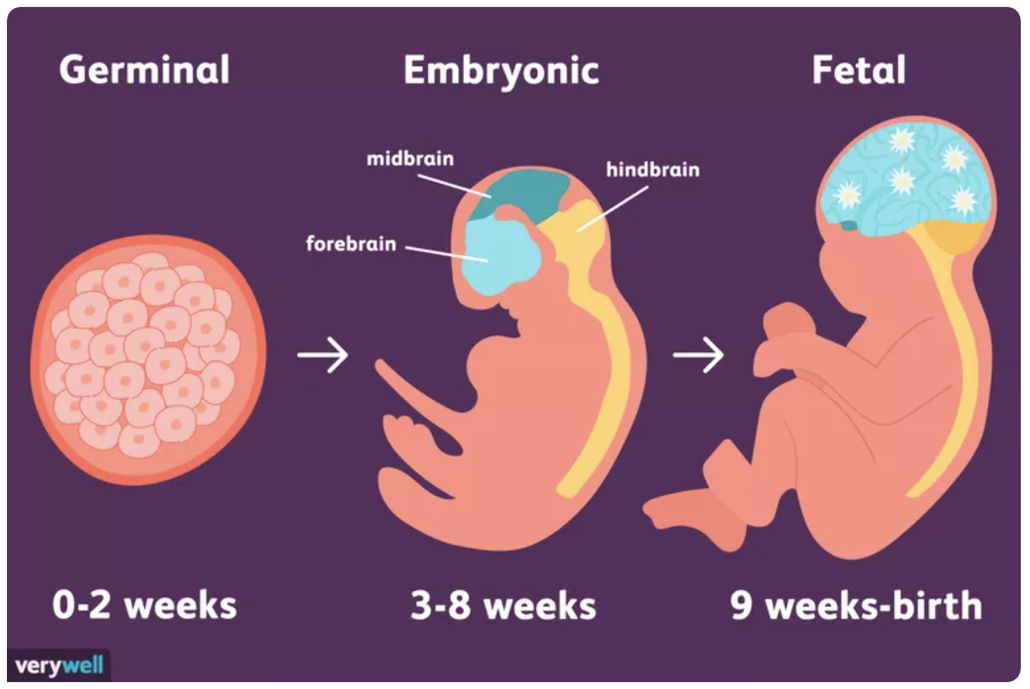The timeline of prenatal development is a crucial part of the entire developmental process. It is concerned with the time during which drastic changes occur, helping to build a basis for further psychological development of a child. During the prenatal period, the brain of the child develops, which is crucial for ensuring healthy progression after birth.
The three stages during which prenatal development takes place include germinal, embryonic, and fetal.

Stage 1
Germinal Stage
The germinal stage of prenatal development begins at the point of conception.
The egg, which has been fertilized by sperm, is referred to as a zygote.
Approximately 24 to 36 hours after conception is complete, cell division begins, with the zygote initially dividing into two cells, later into 4, 8, 16, and further according to a geometrical progression (Figure 1).
After a week-long journey of dividing, the cells evolve into a blastocyst, which is made up from three layers, that are responsible for developing different body structures.
The layers of the blastocyst are:
- Ectoderm, which develops into the skin and the nervous system;
- Endoderm, which transforms into respiratory and digestive systems;
- Mesoderm, which is responsible for the muscle and skeletal systems.
Stage 2
Embryonic Stage
At the embryonic stage of development, the cell mass (the embryo) begins transforming distinctly into a human.
Around 4 weeks after conception is complete, a neural tube is developed, which will then transform into a central nervous system represented by the brain and the spinal cord (Cherry, 2020).
During the 4th week, the head of the embryo begins to form, and it is then followed by important features such as the mouth, nose, ears, and eyes.
During the 5th week, arms and legs appear as small buds.
The embryo only weighs one gram (1/28th of an ounce) by the 8th week of development, but its central nervous system is already established, albeit in a basic form.
Stage 3
Fetal Stage: weeks 9 to 12
The fetal stage encompasses the remainder of the prenatal development, from the ninth week to birth. The fetus’ neural tube develops into a brain and a spinal cord. By the 12th week, it begins to move reflexively.
During the third month of gestation, a fetus forms all the parts of its body, and its sexual organs will begin to differentiate. By the end of the first trimester, it will weigh around 3 ounces.
Fetal Stage: 2nd trimester to birth
Over the second trimester, the fetus continues to grow rapidly as other systems of its body develop. External characteristics such as hair and fingernails also begin to appear during this time. Finally, the brain and central nervous system begin to mature faster and the fetus begins to prepare for live outside of the womb.
References
Cherry, K. (2020). Stages of prenatal development.
Johns Hopkins Medicine. (n.d.). The second trimester.